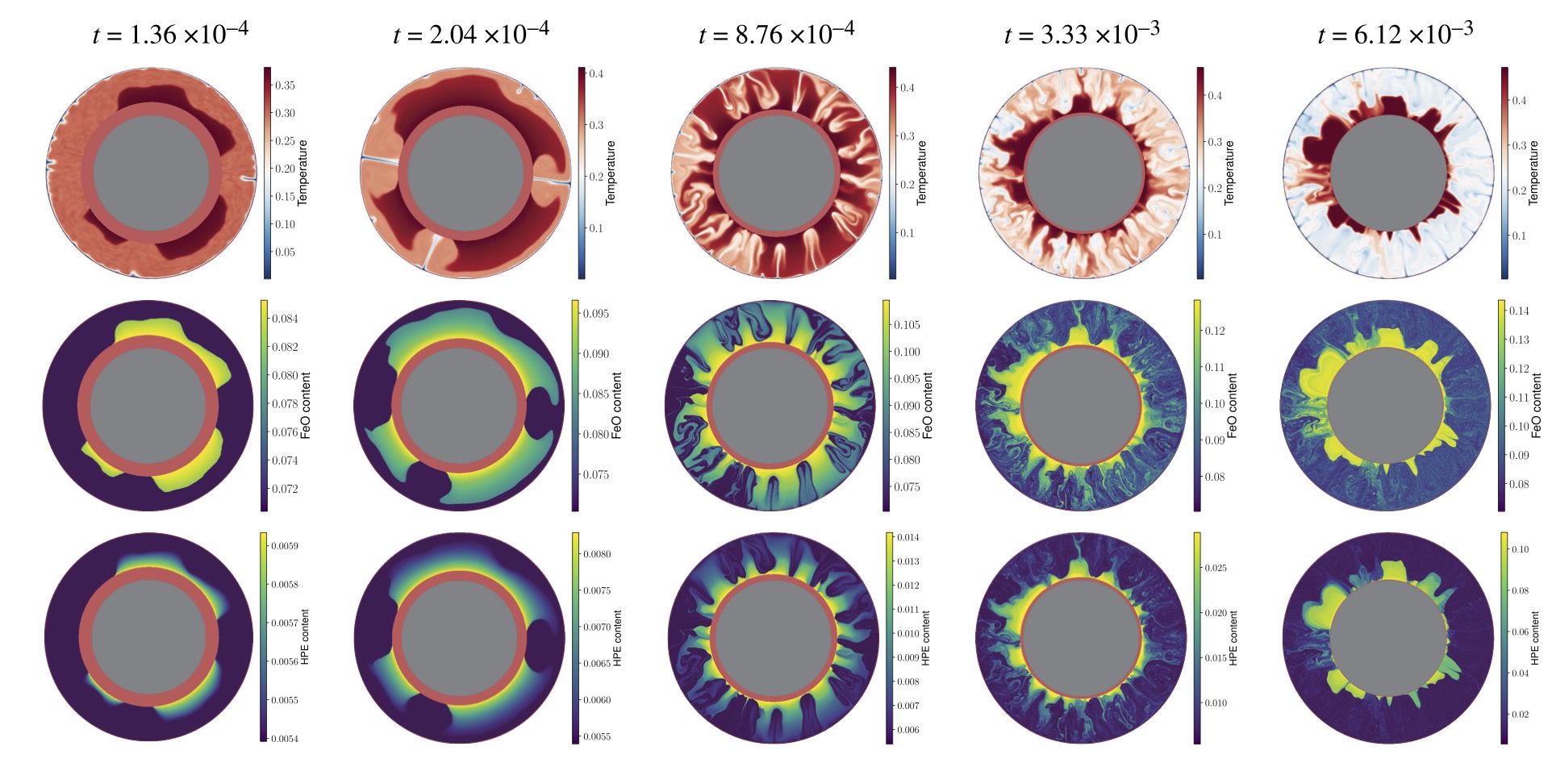A paper on mantle convection interacting with a basal magma ocean
Fractional crystallisation of a basal magma ocean (BMO) has been proposed to explain the formation of large scale compositional variations in the mantle and the persistence of partially molten patches in the lowermost mantle. We present a complete set of equations for the thermal and compositional evolution of the BMO and show that it can be implemented in a mantle convection code to solve the long term mantle evolution problem. The presence of the BMO modifies the dynamics of the mantle in several ways. The phase equilibrium at the bottom of the solid mantle implies a change of mechanical boundary condition, which helps solid state convection. The net freezing of the BMO implies a change of computational domain, which is treated by mapping the radial coordinate on a constant thickness domain. Fractional melting and freezing at the boundary makes the composition of the BMO and the solid mantle evolve, which is treated using Lagrangian tracers. A sample calculation shows that the persistence of the BMO and its long term evolution drastically changes the dynamics of the solid mantle by promoting downwelling currents and large scale flow. The gradual increase of the FeO content in the BMO and in the solid that crystallises from it leads to the stabilisation of large scale thermo-compositional piles at the bottom of the mantle, possibly explaining the observations from seismology.
This paper is open access and the paper is available here.
Full citations:
Labrosse, S., Morison, A., and Tackley, P. J. Solid-state mantle convection coupled with a crystallising basal magma ocean. C. R. Geosciences, 356, 2024. https://doi.org/10.5802/crgeos.275
